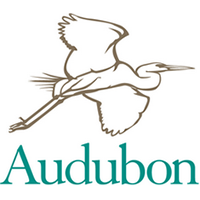USA
The Massachusetts Audubon Society dates back to 1896, when it was founded to protect waterbirds. Within a few years, similar Audubon Societies were established across the breadth of the United States of America. And in 1905, the different groups formed a national organization known as the National Association of Audubon Societies for the Protection of Wild Birds and Animals (National Audubon Society since 1940). But its network of local chapters has always operated autonomously.
In 1962 Rachel Carson, an already influential member of the National Audubon Society (NAS), published Silent Spring. It was a largely technophobic book that painted a dystopian vision of the future, which popularised the fear that the modern world is toxic. Its impact is credited with transforming NAS into a new type of environmental campaigning group, one that believed that ‘you can’t be too safe’ (aka the precautionary principle). That dictum applied especially to the so-called detrimental impact of Dichloro-Diphenyl-Trichloroethane (DDT), which Carson mistakenly claimed caused mutations of the human gene (See National Pesticide Information Center Fact Sheet). However, Silent Spring was not Carson’s first or, arguably, her most influential book.
Carson’s earlier, often overlooked, work was her aesthetic, ethical, environmental philosophical trilogy on ocean ecology: Under The Sea-Wind, a Naturalist’s Picture of Ocean Life (1941); The Sea Around Us (1951); and The Edge of the Sea (1953). According to Susan Power Bratton, the first of these three books, Under The Sea-Wind, suggests a ‘trans-ecotonal sea ethic’. Or in other words a ‘transboundary imagination’, in contrast to the traditional land ethic that mankind was familiar with.
Bratton says that Carson’s novel way of looking at the world acknowledges that human perception is ‘inhibited by ecotones’. Put another way, humanity finds it difficult to look beyond land-based boundaries and to perceive the scale and complexities of the oceans. It was from this paradigm, posited by Carson, says Bratton, that the environmental campaigners ‘learned to think like a mackerel’.
Inspired by Carson’s trilogy and Silent Spring, NAS’s president Carl W. Buchheister defended Rachel Carson when she was attacked by the chemical and agricultural industry. His successor Elvis J. Stahr, former Secretary of the Army, continued to change NAS, which was founded to conserve North American waterbirds, into a lobby with geopolitical ambitions. For example in the 1970s, NAS organised a national boycott of Japanese and Soviet goods ‘in protest of the failure of those countries to accept quotas ordered by the International Whaling Commission’. (see: National Audubon Society records 1883-1990s).
Today, NAS has around 460 local Chapters, more than 20 state offices and 44 Audubon Centers located in the USA.
Leaders
David Yarnold, President & CEO.
Governance
A large Board, supported by a nine-person-strong Executive Board, chaired by Maggie Walker.
Finances
According to its annual report, in 2020 NAS’s expenses were USD126,036, 000, its income was USD161 million.



